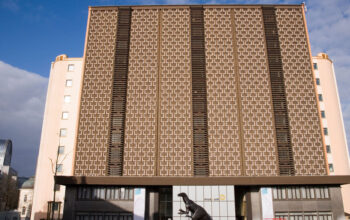
The soup and potato museum protests similarly elicited shock and confusion. “Embarrassing confession: Did not know that climate change was caused by French impressionists,” Scott Shapiro, a professor at Yale, said on Twitter. Conspiracy theories blossomed about the activists’ motives, as both groups received backing from the Climate Emergency Fund, a nonprofit organization to which the oil heiress Aileen Getty and the director Adam McKay have been significant donors.
Stephen Duncombe, a professor at New York University and co-founder of the Center for Artistic Activism, a nonprofit group that trains activists, said the focus of much commentary had made him question the efficacy of the protests.
“Are they talking about food being thrown at art or are they talking about how carbon-based fuels are going to extinguish life on the planet?” Dr. Duncombe said. “If the message getting across is activists doing crazy stuff, does it help the cause or not?”
Yet Heather Alberro, a lecturer in global sustainable development at Nottingham Trent University, said such attention-grabbing actions were all but inevitable given that conventional means of protest have largely failed. To her, targeting high-value art made sense because of the link between wealth and economies built on fossil fuels. “We’re at a moment where we need every tool in the shed,” Dr. Alberro said. “If you’re more outraged by throwing soup on a painting than governments investing in fossil fuels, that says a lot.”
Brian Zabcik, a former organizer with the New York chapter of the AIDS activist group ACT UP, said the most potent protests tended to have obvious connections with the targets. Civil rights protesters raised awareness about racist segregation laws by breaking them. Greenpeace activists went after whaling ships and nuclear sites. PETA supporters threw paint on fur. ACT UP fought the stigma around AIDS and won approval for groundbreaking medicines through a series of high profile disruptive actions, including staging mass “die-ins” and “kiss-ins,” interrupting scientific conferences and political events with foghorns and fake blood, marching on government offices and parading an effigy of Anthony S. Fauci, the head of the National Institute of Allergy and Infectious Diseases.
Mr. Zabcik, who is now the advocacy manager with the nonprofit group Save Barton Creek Association in Austin, Texas, said linking climate change to a van Gogh felt like “a stretch.” Still, he said, criticism invariably spikes with more confrontational protests, and it isn’t the best measure of success. Though ACT UP is lauded now, its tactics were often excoriated 30 years ago.
Benjamin Sovacool, a professor of earth and the environment at Boston University, said the most effective social movements employed sustained and intense pressure for long periods of time, and that one measure of an action’s success was how much it builds a coalition or alienates people. While the museum protests were polarizing, he said, “At least we’re talking about it.”



